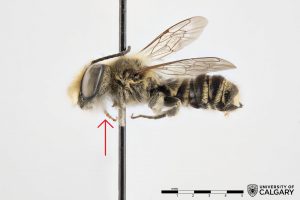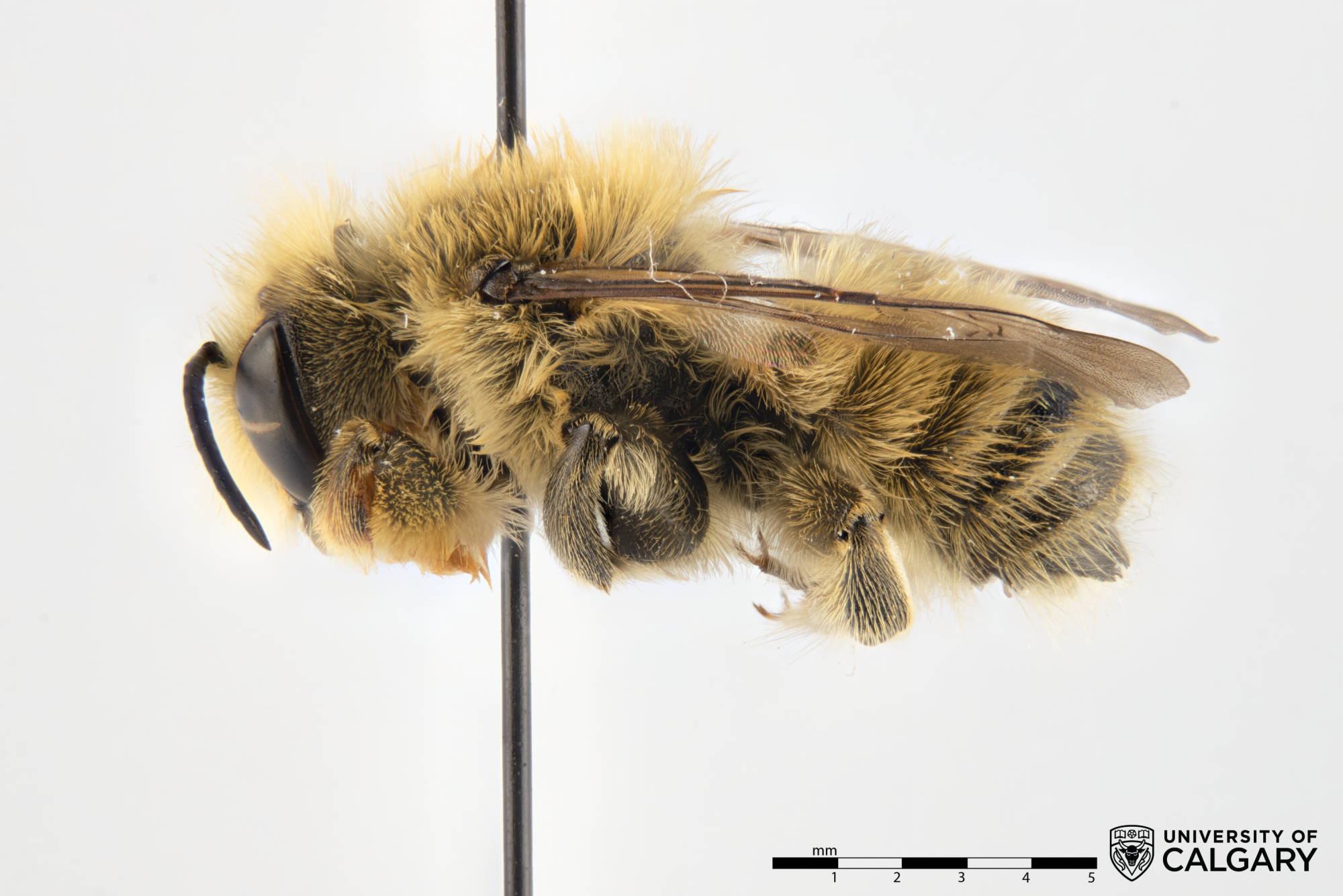Functions
Move or Stay Put – Attach – Temporarily
Maintain Community – Cooperate – Within the Same Species
Differences in the forelegs of bees are often a secondary sexual characteristic that affects male bees and plays a role in their chances of finding a mate.
Forelegs can be used to cover the females eyes as they mate. The different shapes and sizes of the forelegs between species cause different shadows and patterns of light to shine through as he covers her eyes. These patterns signal to the female bee that she is mating with her own species.1
Forelegs are also used to collect scent, whether the scent is excreted as a pheromone (such as can happen in Leaf-cutter bees) or collected from a series of flowers (such as in Orchid bees). This scent is then used as a signal to attract a mate and to assure her that they are the same species.2 When secreting pheromones, the scent can also be used to distinguish the relationship between the female and her mate, to assure that they are not closely related. The forelegs can also come equipped with dense, soft hair to massage the sent into her antennae.1
The forelegs can also be modified to collect oil from flowers in addition to pollen, though this is not a male-specific trait. The oils are collected using a dense brush of hairs on the front of the leg.3


Compare the male Megachile perihirta (left), a species which shows great modification and thickness in the forelegs for mating, to the male Megachile rotundata (right) which does not show any modification. Both images belong to the University of Calgary Invertebrate Collection.
This page was created by Holly Kerstiens in collaboration with Dr. Mindi Summers, Dr. Marjan Eggermont, Dr. Jess Vickruck, Lincoln Best and Dr. Alex Ralevski as part of an independent studies project in winter 2019. This information is also available as a collection on AskNature.org.
Sources
1 The Bees Kamasutra
University of Bonn. 2002.
Wittmann, D
2 Chemical niche differentiation among sympatric species of orchid bees
Ecology. 2009.
Zimmermann, Y. , Ramírez, S. R. & Eltz, T.
3 The Bees of the World
Hopkins Fulfillment Service. 2007.
Michener, C.D.
